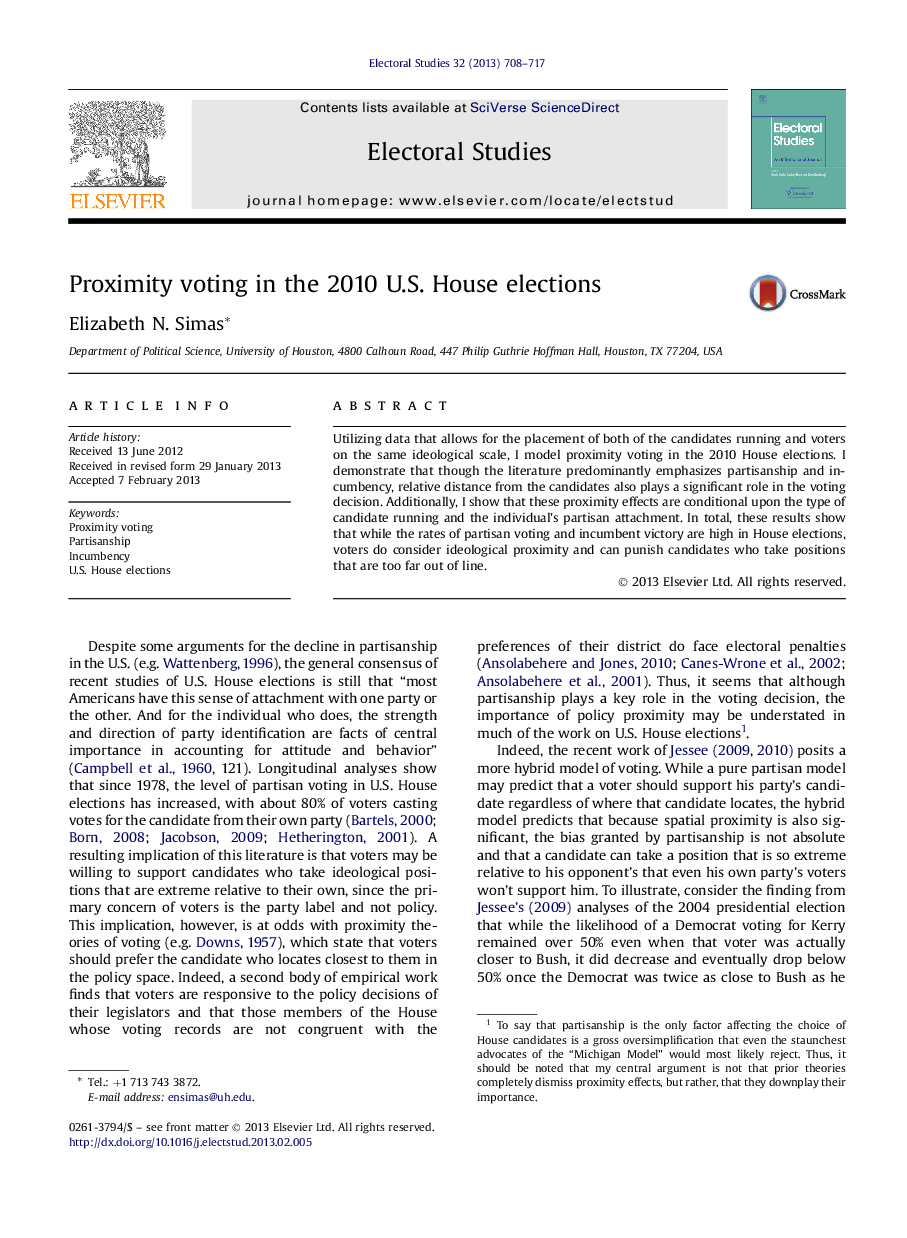| Article ID | Journal | Published Year | Pages | File Type |
|---|---|---|---|---|
| 1051746 | Electoral Studies | 2013 | 10 Pages |
Utilizing data that allows for the placement of both of the candidates running and voters on the same ideological scale, I model proximity voting in the 2010 House elections. I demonstrate that though the literature predominantly emphasizes partisanship and incumbency, relative distance from the candidates also plays a significant role in the voting decision. Additionally, I show that these proximity effects are conditional upon the type of candidate running and the individual's partisan attachment. In total, these results show that while the rates of partisan voting and incumbent victory are high in House elections, voters do consider ideological proximity and can punish candidates who take positions that are too far out of line.
► Proximity to the candidates is a significant determinant of vote choice. ► Proximity matters less for at least some incumbents. ► Strong partisan attachment diminishes the effects of proximity. ► Political knowledge does not condition the use of proximity.
